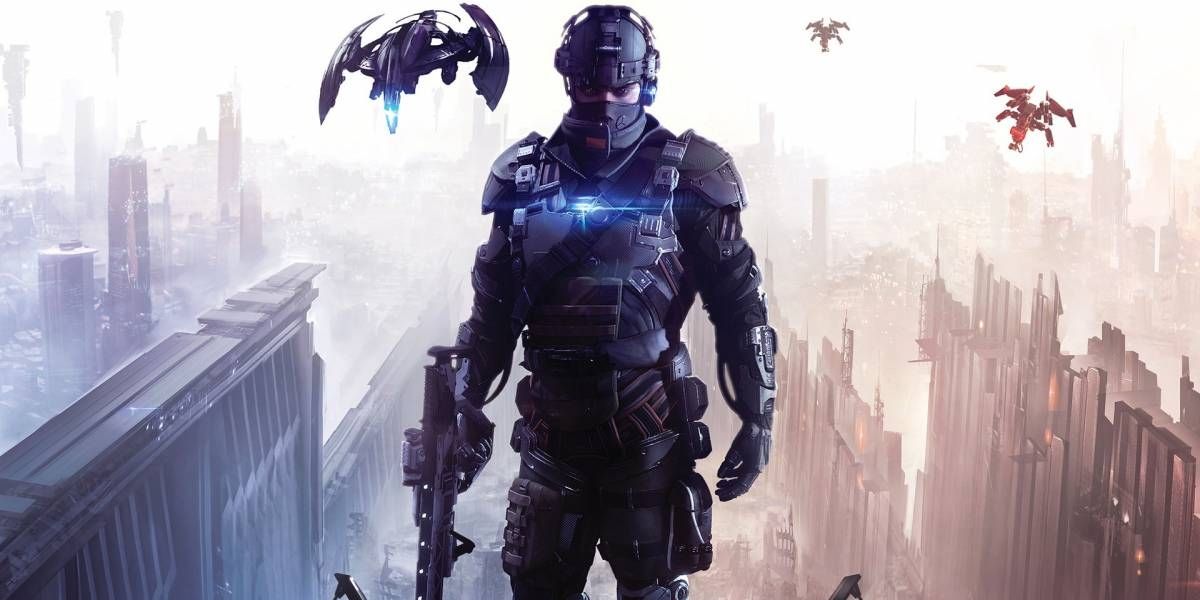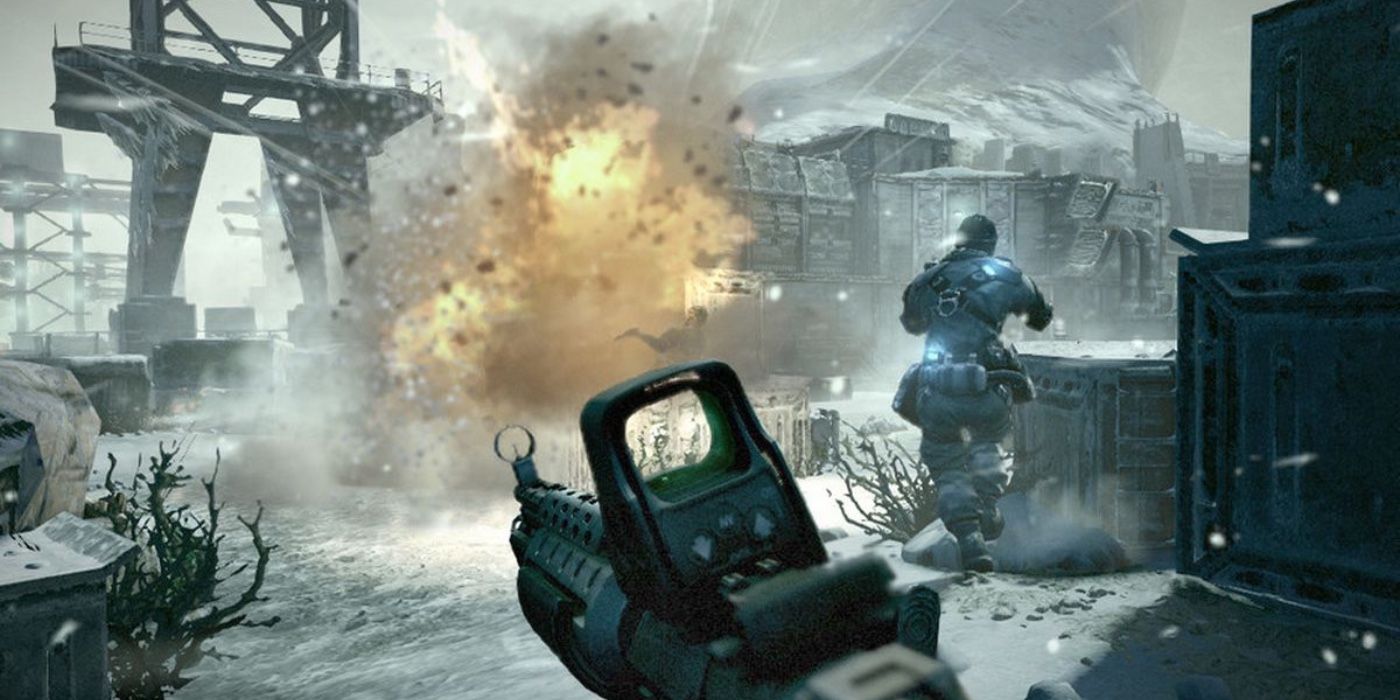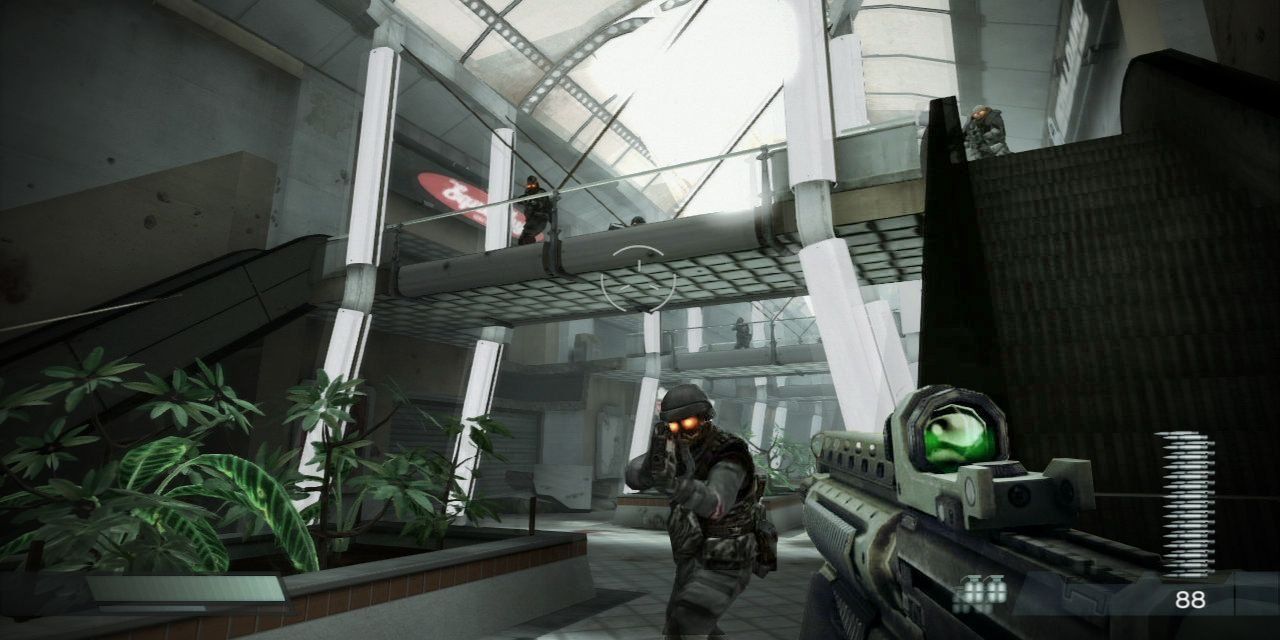Guerilla Games is well known for creating the gorgeous open-world PlayStation exclusives Horizon Zero Dawn and its sequel Horizon Forbidden West. Still, there was a time when the Amsterdam developer was synonymous with the first-person shooter genre. Its smash hit Killzone (playfully dubbed "the Halo Killer") redefined first-person shooters in a big way. Though the first game certainly had its flaws, the sequel is nearly perfect -- but, unfortunately, the series falls apart after that.
Killzone debuted on the PlayStation 2 in 2004 and was an immediate success. The sound effects are gritty and hard-hitting, the story is an intriguing exploration of right and wrong amid war, and the playable characters are all unique and fully realized. Killzone 2 was released in 2009, surpassing the first game in almost every way. The sequel is undoubtedly the best-looking FPS for its time, and the game delves deeper into the Helghast & ISA war than the first game. The ending, however, may not have been the best creative choice, as it triggers the franchise's decline in quality and story.
Killzone is a game that shows how desperate people fighting to survive can be driven to acts of pure evil. The first game sets up the Helghast to be the clear villains, but as the series unfolds, the line between the "good" ISA and the "bad" Helghast begins to blur. In the prologue, Helghan leader Scolar Visari tells the player that his people were abandoned by the ISA many years before on the planet that would become their home world. The harsh environment killed many, but those who survived saw the ISA as the true evil.
The FPS looks at different perspectives in the context of war by allowing the player to change characters within their squad and between missions. By doing this, Guerilla asks the player to try out different tactics for each mission and gain new perspectives. Captain Jan Templar is a well-rounded soldier and a born leader, Sergeant Rico Velasquez is a tank with an intense hatred for the Helghast, Colonel Gregor Hakha is a Helghast turned ISA spy, and Shadow Marshal Luger is the stealth agent and former love interest of Templar. Each character has a different playstyle and a vastly different perspective on the war between the Helghast and the ISA, creating a diverse and exciting squad to follow.
Killzone 2 further explores the gray area of war and the line between right and wrong, this time focusing on trauma, acts of violence, and propaganda. If the series kept with Killzone 2's upward trajectory, it would certainly still be considered "the Halo killer," as the story concepts and characters are far more interesting than Bungie's hit series. In Killzone 2 the player is limited to one character, Tomas Sevchenko, but since he is greatly nuanced and has many moments of growth throughout the game, it doesn't feel like a step down from multiple playable characters.
Though Killzone 2 is the best in the series, the ending is the notable moment where the series falters and never recovers. The conclusion sees the execution of Scolar Visari by Rico, which all but guarantees the war between the ISA and Helghan will never end. The people of Helghan will always see their leader, Visari, as a martyr, and they will always see the ISA as his executioners. In a radical spin of events, the end of Killzone 2 shows the ISA as the villains because their actions are what cause the war to continue.
The first two Killzone games set the stage for what could have been a fantastic series by exploring the characters behind the violence. Unfortunately, Killzone 3 does not continue this concept and instead opts for a more simplified good versus evil story, which ends with the decimation of the Helghan homeworld. Still, while the game didn't live up to its predecessors in terms of nuance and complex storytelling, that last act of ruthless violence by the ISA could have been a fitting, albeit extremely somber, ending to the trilogy.
However, Guerilla Games took one last kick of the can with Killzone: Shadow Fall. This latest entry feels entirely removed from the first two games, and its connection to Killzone 3 is underwhelming. Shadow Fall has none of the heart that drove Killzone and Killzone 2, and even parts of Killzone 3. Maybe because Halo is a franchise still going strong, Guerilla Games felt a responsibility to continue. Still, it's hard to enjoy a game when the heartfelt storytelling component is no longer present. Killzone should have ended with the death of Visari, as it became a shell of its former self in later entries. Now, Guerilla has moved on to the Horizon series, which hopefully will maintain its upward trajectory as it continues.



